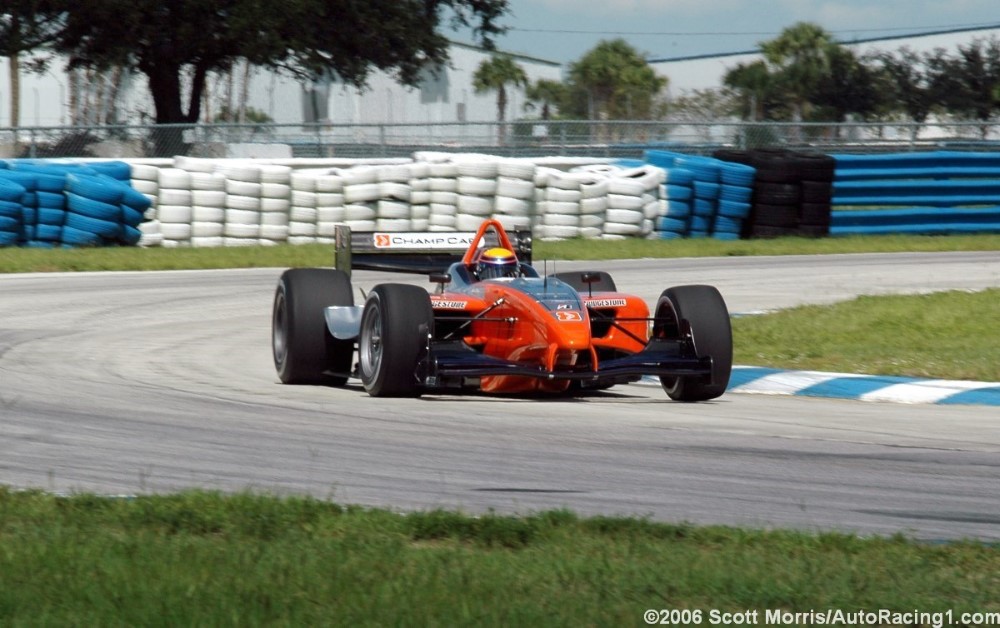Costs to race an IndyCar getting out of control
 |
| The Panoz DP01 Champ Car was a much lower cost platform on which to race. IndyCar can learn a lot from how Champ Car reduced the cost of racing. |
When it comes to saving costs for the race teams, Champ Car had it all over IndyCar. AutoRacing1.com has learned that the cost to race in IndyCar is far higher than it was in Champ Car. Champ Car got it right when they moved to the new Panoz chassis, locking the car down so the teams could not make modifications to aerodynamic and mechanical pieces in order to gain an advantage. But it doesn't start there. A new car in the IndyCar series costs a whopping $675K when you add up all the costs.
You might question where we got the $675K from, but it comes right from a team owner. The low value of the USA dollar is a contributing factor to the higher cost. The Panoz DP01 Champ Car was manufactured and built in the USA. Because the Dallara IndyCar is manufactured in Europe and the USA dollar is now only worth 63.6% of the Euro, the cost of a comparable car built in Europe is 57% higher just to start.
The initial purchase cost of an IndyCar (as compared to the Panoz DP01) is driven so high because:
- The exchange rate on the dollar as noted above, and that was for Euros. Image if the car was made in England where the British pound is double the value of the US dollar. How stupid is that? The car should be manufactured and assembled in the USA – period.
- The teams are forced to purchase a kit for almost every race track. The kit provides suspension parts for each race track that changes the suspension and aero setup to best suit each particular race track. There's a Homestead kit, a Texas kit, an Indy kit, a Richmond kit, a street course kit, a road course kit, etc. How stupid is that? Design a spec suspension to work everywhere and deal with it. It would be the same for everyone.
- No carbon fiber pieces come with holes drilled in them. Not even the tub. So when the teams get a new car, or a new body piece, they have to spend time lining stuff up and drilling holes to mount each and every piece. For a new car, that means man-weeks worth of extra work. With a proper race car like the Panoz DP01, when the pieces arrive you just bolt them together. So if you buy used pieces from another team it won't bolt onto your car because they may have drilled their holes in a slightly different location than you did. How stupid is that?
So right out of the box a new Dallara IndyCar with all the kits costs $675K, almost double the cost of the Panoz DP01 Champ Car.
But the pain of racing a new IndyCar doesn't stop there. AutoRacing1.com has learned that teams are allowed to modify aerodynamic body pieces. How fast do you want to go? How much money do you have to spend? Want to make your IndyCar go faster? Spend a Bazillion dollars in the wind tunnel. How stupid is that?
Again, the pain of racing a new IndyCar doesn't stop there. As previously mentioned on these pages, teams are allowed to spend days doing straight-line rolling resistance testing and it doesn't count against your allotted test days for the year. Bazillions!! How stupid is that?
More than one ex-Champ Car team owner told me they can't believe how much more expensive it is to race an IndyCar. Sure the crash damage on ovals is higher (think Richmond) but the cost of the car itself, and all the custom modifications that are allowed is out of hand.
Having heard this lunacy, we confronted the IRL's Tony Cotman about it. He said, "We are aware of the issue and we already put the teams on notice at Indy that a bulletin will be issued later this year that will limit the amount of custom modifications a team can make to the car for the sole purpose of reducing cost."
"The worst thing that could happen to the sport right now is to go from the 26 to 28 cars. We now have back the momentum we have built with the merger to 20 cars, because the cost is too high for some teams to survive and that is a real possibility.
"That would kill all the strides we have made with the merger."
